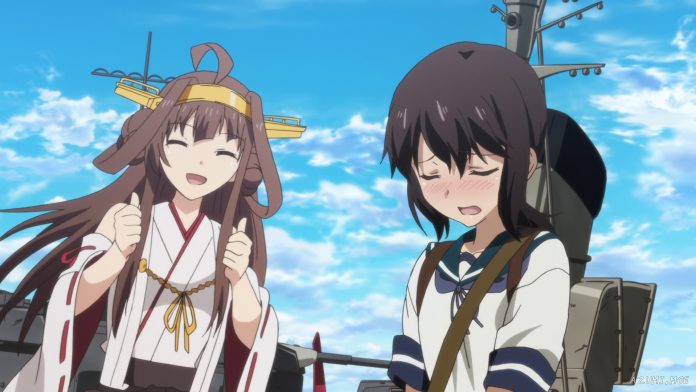War can be an strong force in reshaping a society and its culture. It’s produced incredible changes in our countries today. As a result of World War II, Japan became a technologically forward, secular society instead of a traditional, partially feudal society. Media plays a big part in understanding history, including how it’s portrayed. So how does Japanese media, including anime, depict World War II? And how does that history influence their media?
Anime During World War II
World War II intricately links to the origins of anime. Wartime resource restrictions heavily hindered the first full-length anime film, Momotaro: Sacred Sailors (1945), rushing it to release. Director Seo Mitsuyo lead a staff of former waitresses retrained as animators, after losing his original animators to the military draft. While wartime governments used animation as a tool for propaganda, the Japanese government didn’t believe it to be effective. Instead they delegated similar films as being “for children”.
Momotaro depicts the story of four cute anthropomorphic animals going off to fight for the Japanese navy. They’re star-struck by the might and technology in the imperial navy. Eventually, the animals help paratroop onto the island of Celebes, part of the Dutch East Indies and modern-day Indonesia, and face cowardly British officers forced to surrender. This adaptation meant to show kids that the Japanese navy, a source of prestige, was making advances.
However these scenes are results of Japan’s usage of anti-colonial rhetoric against the British. Using events like the Battle of Manado in 1942, where the Japanese took Celebes, to reinforce this idea. They weren’t invaders or colonists like the European empires, instead they were “liberating” these countries from colonial rule.

Animation Work After the War
After World War II, a handful of anime creators stayed in business by working on the only type of movie available to them: US propaganda for the Occupation authority on films for its Civil Information and Education department. Others lived hand to mouth, working on animated graphics or inserts in live-action films.
By the end of the war, female laborers disappeared from the story of Japanese animation, as the men came home. Animation was extremely competitive, even among those who returned. Soldiers and colonists from overseas were all looking for work. Even animation studios overseas returned to mainland Japan, such as Man’ei Studio, based in Japanese colonial territories in Northeast China.
During this time, depicting World War II was highly taboo. The Occupation force would prosecute studios for showing Japan’s war efforts as good. Yet the Occupation came and went, so how has Japan’s anime depicted what has happened in the war?
World War II in Anime
A notable example is Konpeki no Kantai, a series based on World War II but strays into alternate history. It starts with the death of Admiral Isoroku Yamamoto, shot down over Bougainville Island on April 18, 1943. However, Yamamoto then awakens in a ship. He soon discovers that it’s May 28, 1905, right after the Battle of Tsushima during the Russo-Japanese War. The admiral then uses his advanced knowledge of the next 38 years so Japan doesn’t make the same mistakes.
Yamamoto goes around starting a massive naval build-up of advanced battleships and supercarriers, as well as nuclear submarines. He also coups the fascist government of Imperial Japan’s army general Hideki Tōjō a day before the Pearl Harbor attack.
Anime handles World War II differently to how the West uses it like a highlight reel of most heroic bits. Any mention of the war tends to have a heavier emphasis on the war in the Pacific rather than the much larger scale land war against China. This might be because the naval war with the US was largely bloodless in comparison to the slaughter from the war with China. Additionally, provoking China would be more harshly met as China is right on Japan’s border.
Military Inspired Anime Girls
Other World War II inspired anime tend to skirt around any tangible idea of Japan in the war and focus on aesthetics. A good example of this is Girls Und Panzer. The setting of Girls Und Panzer is a whimsical one where sport-style warfare competitions use historical World War II tanks. Here, “tankery” is considered a traditional martial art where live rounds are used but no one ever gets hurt. Furthermore the gang of main characters, a group of high schoolers, engage with other tank military schools. Each school has adorable caricatures of World War II nations. There’s an American school, their students loud and brash, and Russian school, whose members all drunk and angry, etc.

Another anime that falls into this category is Strike Witches. The story there takes place on an alternate Earth during the World War II, after an invasion by an unknown alien force who take on forms similar to aircraft and spread disease. The militaries of the world call upon Witches, young girls with magical powers inspired by real-world pilots, to fight.
The multimedia series is Kantai Collection focuses on the Imperial Japanese Navy. The premise revolves around girls who wear weaponized outfits and embody the spirit of historical naval vessels. They dress and are sized in a way that represents their real-life ship counterparts. And they’re even represented by the amount of food, or fuel, they need to keep running. A “lack of supplies” is a recurring problem in the show, the same as Japan faced in World War II.
Conclusion
Japan often gets the blame for covering up what they did in the war. This is definitely the case in contemporary mainstream politics and academia. However, anime fits into a different part of this narrative.
It’s true that anime plays a part in perpetuating myths about the war. This is especially the case in the idea that Japan could have won. In reality, Japan was a small, resource-poor nation in a long-term war against the biggest industrial powers in history.
Anime tends to distance from strong details of World War II. Typically, they solely focus on one aspect of the war, such as the navy or tanks. The war couldn’t be directly depicted. And this is famously the reason that Godzilla, a metaphor for the atomic bomb, was made the way it was.
This all shows a society driven in part by shame for the war and a desire to change history. Japan has a long way to go in dealing with its own demons, but maybe attractive gun-boat girls can help that.
Let us know your thoughts in the comments below or on Twitter!



